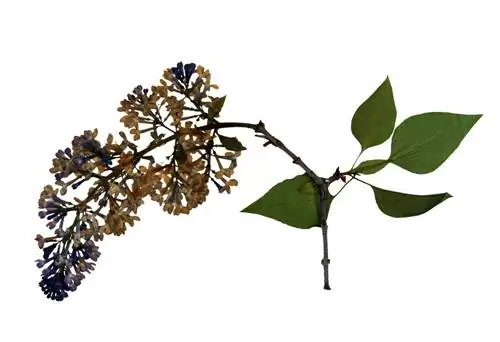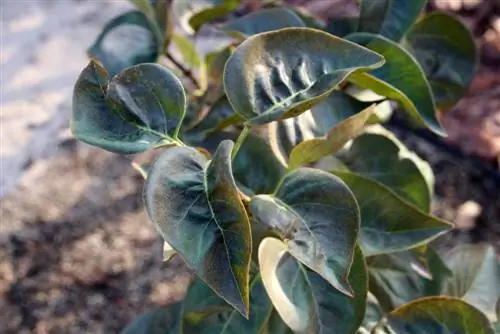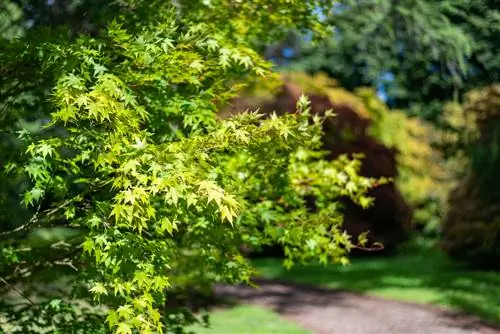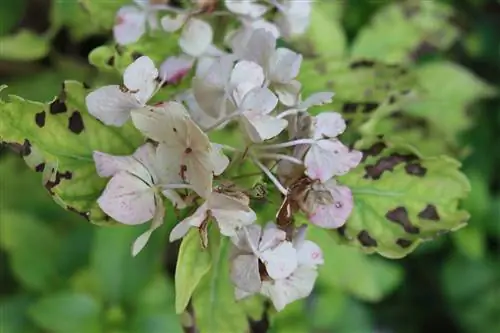- Author admin [email protected].
- Public 2023-12-16 16:46.
- Last modified 2025-06-01 06:02.
Even the robust and easy-care lilac can be plagued by he alth problems from time to time. For example, if the bush seems dry, you shouldn't immediately reach for the watering can. Instead, take the time to research the specific cause. Only then can you provide targeted help to your ailing lilac.
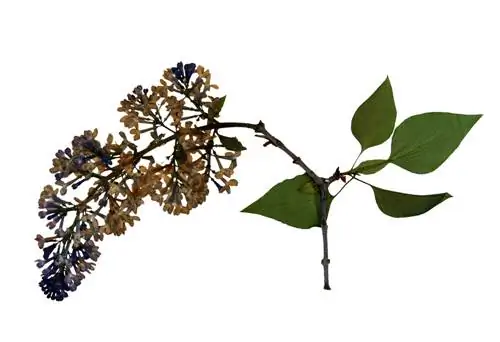
What causes lilacs to dry up?
If the lilac appears dried out, this may be due to a lack of water, waterlogging, soil pests, diseases or too much heat at the location. Dead plant parts should be cut back to the he althy wood to help the lilac.
What causes lilacs to dry up - the most common causes
At this point we have put together the most common causes that lead to lilacs drying out and possible treatment methods. In many cases, the cause is damage or impairment of the roots and thus a lack of supply of water and nutrients to the above-ground parts of the plant. But the pathways themselves can also be affected, so that the roots no longer reach all the shoots. As a result, they die. This is often the case, for example, after moving an older lilac, when a large part of the root system has been cut and no pruning has been carried out - fewer roots supply fewer above-ground parts of the plant, which is why some others simply dry out.
Water shortage
Especially when it is hot and dry, lilacs can quickly become thirsty, especially in sandy soils. The first sign of a lack of water is the leaves, which initially hang limply and later dry out and fall off. Only thorough watering helps against this.
Waterlogging
As paradoxical as it may sound at first: too much moisture can also cause the lilac bush to dry out. Here, however, the lack of water occurs because the roots, which are constantly in moisture, rot due to fungi and bacteria and can therefore no longer supply the lilac. Sometimes you can save the plant by boldly pruning it back and moving it to drier soil.
Soil pests
Voles and grubs - these are the larvae of the May beetle - like to eat the roots of lilacs. As a result, it can no longer be supplied and dies.
Diseases
Some pathogens can cause wilt, which initially causes the death of individual shoots and later the entire plant. These include, for example, Verticillium fungi or the lilac disease caused by the bacterium Pseudomonas syringae. In all cases, only a strong pruning back into the he althy wood helps.
Tip
Although the lilac needs a location that is as sunny as possible, it can definitely “burn” in very exposed places and in high heat. You can initially recognize this by brown spots on the leaves, until the leaves and shoots eventually wither. When planting, make sure you choose an airy, calm, even windy location.

